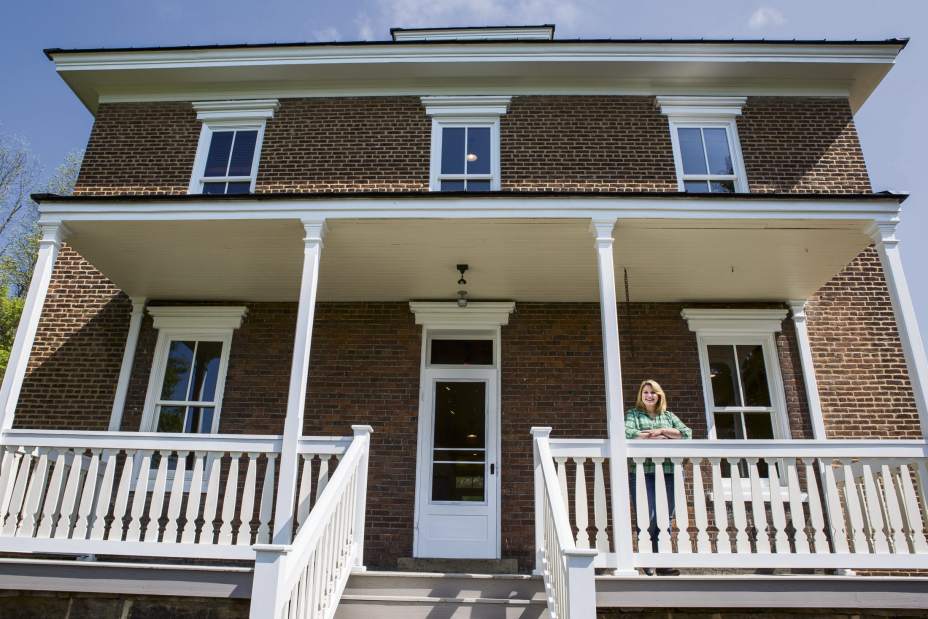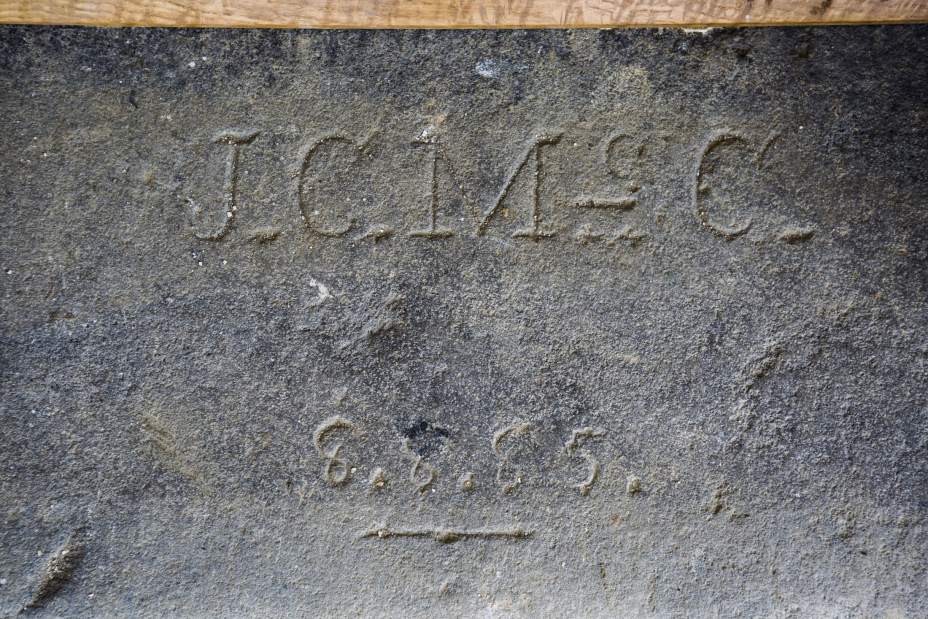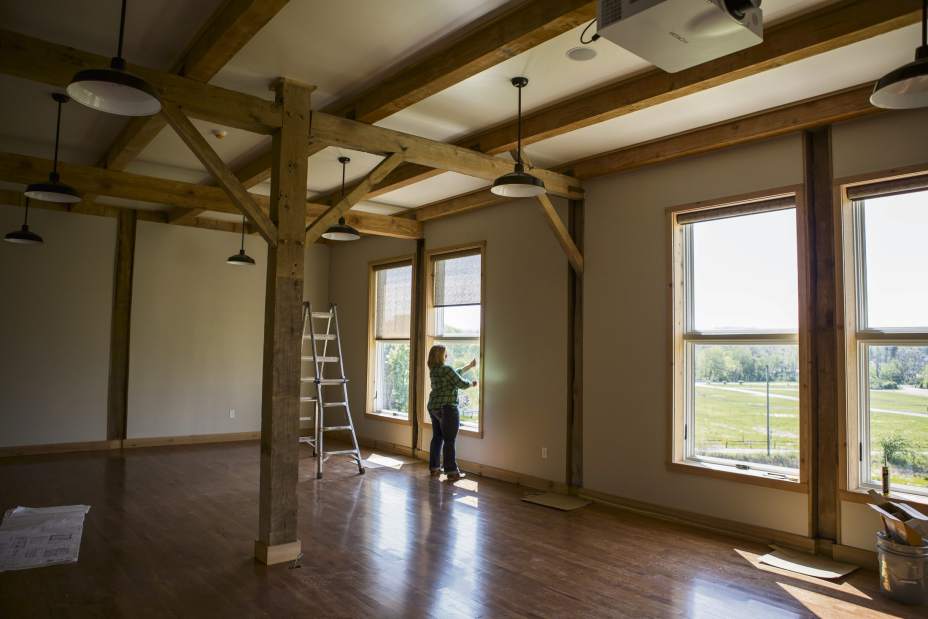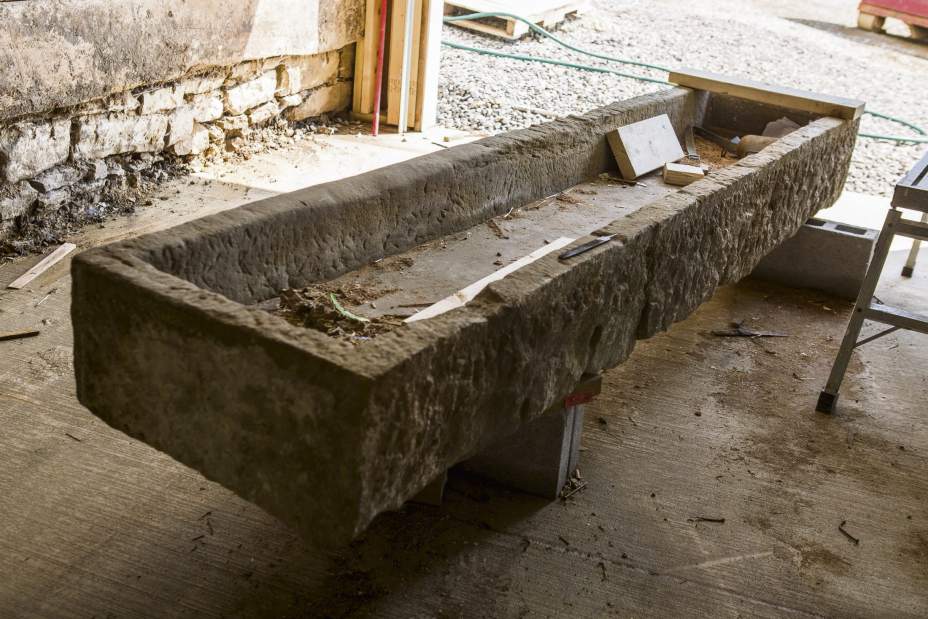Loyalhanna Watershed Association moves into historic house
Visitors to the Loyalhanna Watershed Association office soon will enjoy a panoramic view of Ligonier and its rural surroundings.
The scenery is an added attraction at the landmark 19th century McConnaughey farmhouse just west of town, which the association has restored and adapted to be its new office space.
“It's been six years since we started talking about this,” association Executive Director Susan Huba said. “We've come a long way.”
Huba and two other staff members hoped this week to complete the move into the two-story brick house on a hillside off Old Route 30, pending installation of Internet and phone service. They'll be leaving a former headquarters building nearby that has been plagued with a leaking roof.
Huba said the restoration, made possible through several foundation grants and fundraising, has fulfilled the association's goal of preserving the 1885 house, a barn next door and the surrounding 123-acre property for future generations.
“The house itself hasn't changed a lot,” Huba said, with the exception of the main stairway, which was moved to the rear of the building to open a narrow first-floor hallway for handicapped access.
Work on the house began in September, with new plumbing, electrical wiring and insulation added. Exterior bricks were re-pointed except on the front porch, where restoration consultant Brad Mooney persuaded the association to retain historic graffiti scribbled on the mortar.
Old photos and an uncovered fragment served as guides for recreating the original wooden porch railing. Huba said students in Indiana University of Pennsylvania's woodworking program helped.
Huba said the goal was to retain or reuse as many original architectural features as possible: “We didn't throw a lot of stuff away.”
Paneling of various types of wood that had covered the walls was salvaged and installed as wainscoting. Ligonier woodworker Don Hobaugh incorporated portions of old barn beams as supports for a conference table.
Huba said old photos and family heirlooms provided by McConnaughey relatives will be displayed, along with other period items discovered during work on the structure.
“We found lots of things in the walls,” board President Wink Knowles said, including an 1895 letter, a Ligonier Valley Railroad receipt and many square construction nails, which were used until the late 1800s.
The McConnaughey family settled in the Ligonier Valley in 1799, moving from what would become Homer City, Indiana County, Huba said. The farmhouse, built by John Callender McConnaughey, was occupied by the family until 1999, when it briefly was owned by Howard Burke. When his plans for a housing development fell through, the watershed was able to acquire the property in 2000.
At that point, the farmhouse was in poor condition and the barn was in even worse shape, with a failing foundation on one side, Huba said.
“Our board was faced with a huge decision,” she said. “We had three buildings that were in disrepair,” including the former township building.
A study underwritten by the Heinz Endowments indicated restoration of the farm property as watershed headquarters was realistic. Mostly local resources were used, including general contractor Fort Construction Group of Ligonier and New Florence's High Turr Farms Landscaping, which shored up the barn.
“It's been a landmark for the Ligonier area,” Knowles said of the farmhouse. “It was very important to keep that aspect alive for Ligonier rather than tear it down.”
A standout feature of the house is its crowning cupola — a hallmark of Italianate architectural design.
The Nimick Family Education Center, a modern meeting space, was constructed inside the barn with support from the Nimick Forbesway Foundation. It can accommodate up to 100 people, a big jump from the 40-person capacity at the former watershed office.
The next event in the space will be an open house for the restored farm buildings, set for 9 to 11 a.m. and 2 to 4 p.m. June 13-16. A ribbon-cutting ceremony is at 9 a.m. June 15.
Huba said the watershed association received $1,843,655 in grants and donations for the restoration, enough to cover costs of $1,830,669 that includes remaining work such as landscaping, adding a permeable parking area and developing a trail loop that will connect the property with the Ligonier Valley Trail. Nathan Andrews plans to work on the loop as an Eagle Scout project.
With the assistance of the U.S. Department of Agriculture, the association planted 1,700 trees and shrubs on the property to serve as buffers and to help control erosion.
A pump was installed in a former root cellar to divert spring water to a higher elevation, where a pasture provides grazing for 30 or more Hereford cattle owned by tenant farmer Ken Reed of Derry, Huba said. Rain gardens will be developed to further direct the runoff.
“Before, it was running down the driveway,” Knowles said. “Now it's controlled.”
A 4-acre wetland was restored with the help of the state Game Commission, and Huba said the association plans to develop a bird habitat.
“It's a great opportunity for people who like wildlife,” she said. “It is open to the community.”
Once the move into the farmhouse is completed, most of the structures at the old watershed office site will be demolished and the area will be returned to green space, Huba said. One exception is a building that the Laurel Highlands Visitors Bureau uses for storing promotional brochures.
Jeff Himler is a Tribune-Review staff writer. Reach him at 724-836-6622 or jhimler@tribweb.com.








